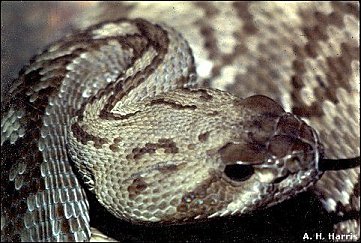
Serpents are thought to have evolved many of their snaky characteristics when they adapted to underground life in the distant past. Indeed, many of our desert snakes are still at home in burrows, and some, like our worm snakes, seldom venture to the surface. Among traits thought to be adaptations for fossorial life are the absence of limbs—thought by many to be the defining characteristic of snakes, unaware that some lizards and amphibians also are legless.
Some people freak out under the unblinking stare of even the most harmless of snakes. Why that steadfast glare? Simple. No choice. Lacking eyelids, snakes view the world from behind a transparent protective cover over the eyeball, really neat for keeping dirt out of the eyes when living in burrows. Probably the absence of ear openings also serves to prevent dirt buildup—or maybe it's just that there is little need for hearing since a head and long body hugging the soil picks up vibrations very nicely. Snakes, like us, carry reminders of the past in the very makeup of their bodies.

Contributor: Arthur H. Harris, Laboratory for Environmental Biology, Centennial Museum, University of Texas at El Paso.
Desert Diary is a joint production of the Centennial Museum and KTEP National Public Radio at the University of Texas at El Paso.

Black-tailed Rattlesnake (Crotalus molossus). Photograph by A.H. Harris.